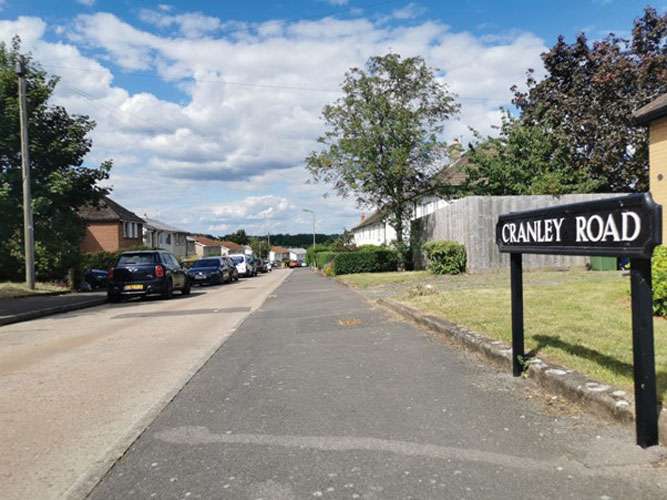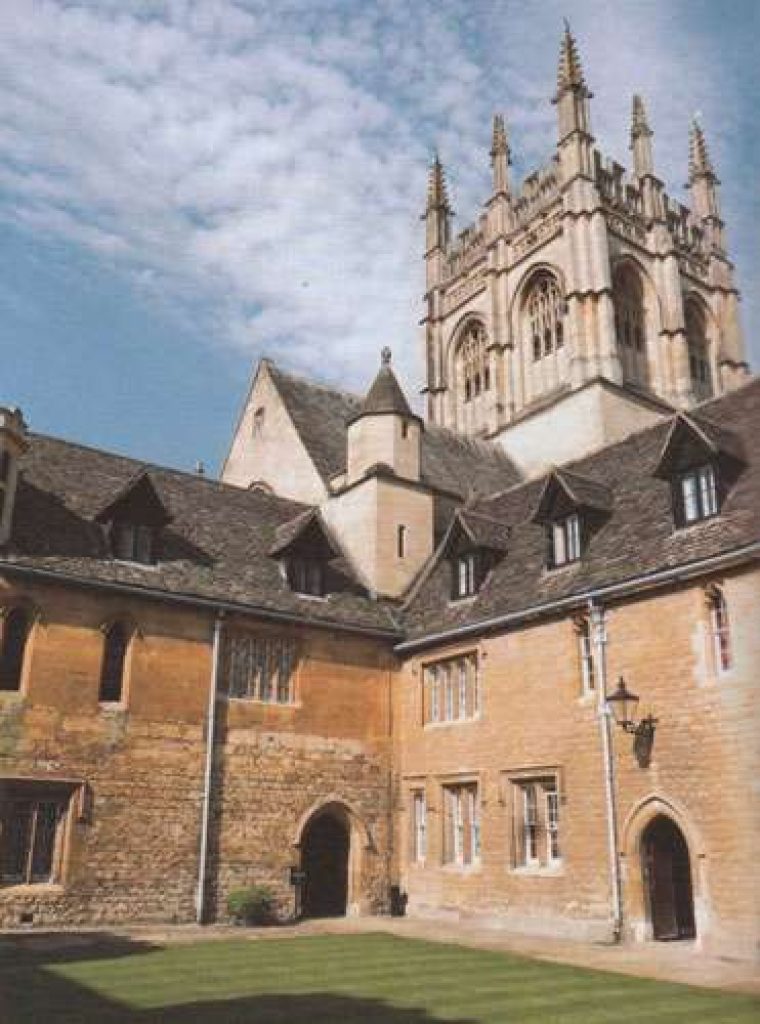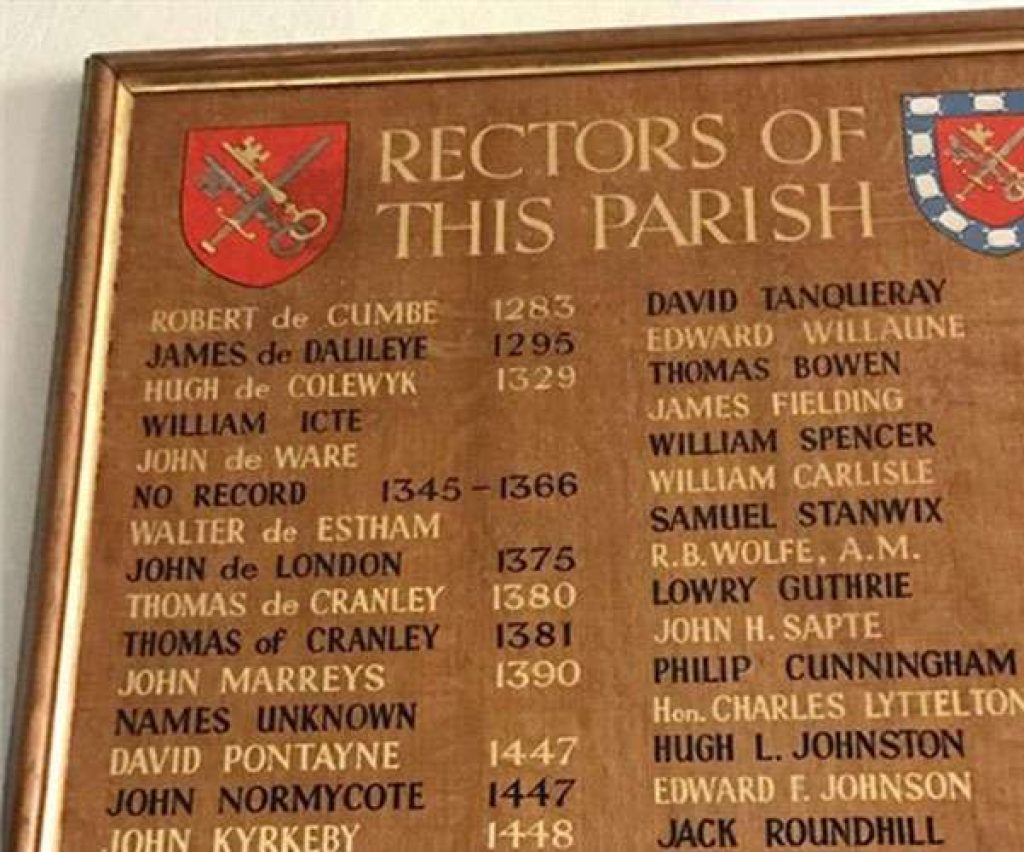
Cranley Road, Barton, Oxford (courtesy of Al Horn)
The city of Oxford is another place that has a street apparently called after our village. The suburb of Barton was developed in 1947, and one road was given the name of Cranley Road. What story lies behind this? And why was it given the name for our village before 1867, when the Post Office decreed that we should be ‘Cranleigh’ instead of ‘Cranley’, because of confusion with Crawley?
We are looking therefore for something or someone linking this village and Oxford before 1867. And it turns out to be a very long time before then: in fact the road is named after one Thomas of Cranley (or Thomas Cranley), who died in 1417!
Thomas is thought to have been born at Wickhurst, in north-east Cranleigh, now Wykehurst Farm, Ewhurst, though his early years are hazy. The first mention of him in written records is in 1366, when he was living at Merton College, Oxford, as a Fellow (a young graduate, probably a teacher). From this, it is likely that he was born about 1340. How he came to study at Oxford University is unknown. Sometimes a bright boy would catch the attention of someone with the financial means to pay for his studies, with a view to employing him later. As Wickhurst was a tenancy of the manor of Shere-Vachery, it seems likely that Thomas’s patron was James Butler, 2nd earl of Ormonde (in Ireland), who was lord of the manor then.

Merton College, Oxford (from Walking Oxford (2021)). This quadrangle, the earliest enclosed one in Oxford, was built while Thomas Cranley was here as a Fellow of the college in 1366. Fellows had rooms through the little arched doors, 3 or 4 of them off a staircase.
There are records of Thomas being ordained deacon and then priest in 1375-6. In 1380, James Butler presented Thomas Cranley to the rectory of Cranleigh. Whether Thomas was actually active here is a moot point: he may have been busy in the service of the earl of Ormonde, in which case he would appoint a low-paid vicar to do all the work, while he received the salary. In addition, Thomas became chaplain of three chantries in a City of London church and of the Guildhall Chapel, a canon and prebendary of York, rector of Havant in Hampshire and briefly rector of Bishopsbourne, Kent. This profusion of jobs was not unusual, as it was permissible for a rector to hold extra church posts that did not involve pastoral care of people – provided that somebody was paid to deputise – but it would not have been legal to hold the rectories of Havant and Bishopsbourne at the same time as Cranleigh. Maybe he resigned Cranleigh, or had special permission from the king or the bishop of Winchester.
Work of national significance was in store for Thomas Cranley, however. In 1382, James Butler, earl of Ormonde died, and it looks as though William of Wykeham, a very famous bishop of Winchester, saw his opportunity to employ Thomas. The bishop had recently founded Winchester College (a boys’ school), and he appointed Thomas to be its first ‘Warden’ or head. The pope gave his endorsement to the college’s foundation in 1378, and the first buildings were erected in 1387-94, presumably under the supervision of our Thomas. William of Wykeham also founded ‘Seinte Marie College of Wynchestre in Oxenforde’ (New College, Oxford) as a partner to Winchester College, and he transferred Thomas Cranley to be the Warden there in 1389. He must have done a good job at Winchester College.
He also became chancellor of Oxford University in 1390 (the post currently held by Chris Patten), by which time he had become a Doctor of Theology. He was sent on a mission to the pope in Rome concerning the ‘wellbeing of the English church’ in 1397.

Part of the list of rectors displayed in Cranleigh parish church, showing Thomas Cranley
In the same year he was made archbishop of Dublin – most unusual, without being a bishop previously. The earl of Ormonde (Thomas’s probable first patron), had been lord justice of Ireland: is it possible that his protégé had assisted him there and so was the obvious choice when the archbishopric became vacant? Thomas resigned all his other posts and went to live in Ireland. But he continued to be given further jobs. He was immediately appointed lord chancellor of Ireland (the top legal office). All this suggests he was highly regarded. However, he was now elderly and in poor health, so most of his work as lord chancellor was done by deputies.
In 1417 he was asked to come to London to report on the state of Ireland, but he died on the way, at Faringdon in Berkshire. He was buried in the chapel of New College, Oxford, with an impressive monumental brass and an inscription calling him ‘the flower of prelates’.
The land that Cranley Road in Oxford was built on was bought from New College in 1947. It was named after Thomas Cranley because he was a distinguished Warden of that college. Several other roads in this area commemorate notable New College men.
Thomas Cranley, who was briefly our rector, seems to have been a brilliant and versatile man. Who would have imagined that unravelling the reason for our village name being used for an Oxford road would lead us to such a distinguished academic, diplomat, archbishop, and lawyer in fourteenth-century Ireland?
The Cranleigh History Society is not meeting in August.











